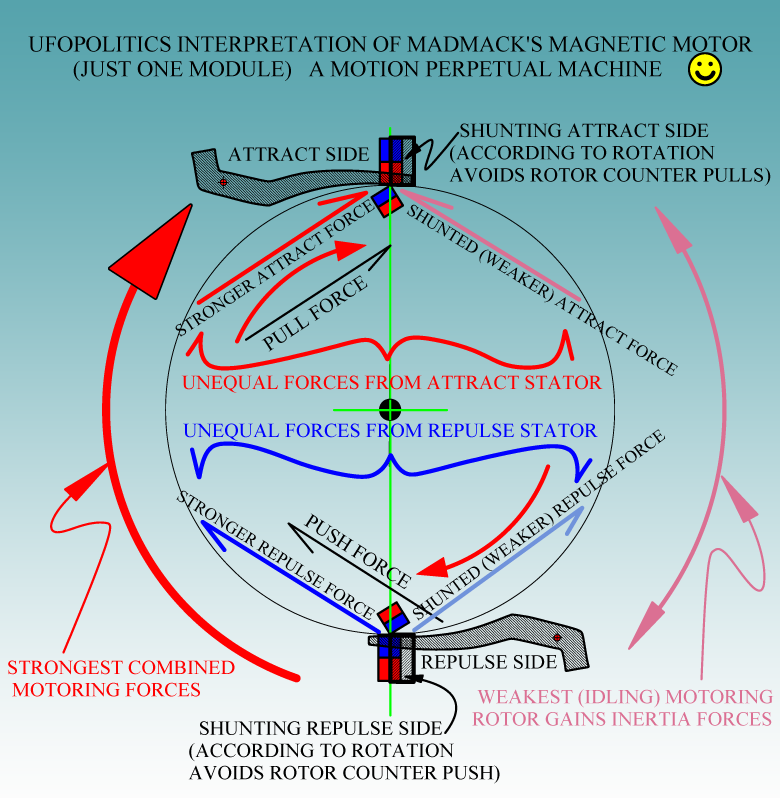Originally posted by Ufopolitics
View Post
I am trying to catch up my reading and you have much to offer.
Glad we got rid of the offensive. You are right to swing hard bub.

The writing here about angles is important to builders.
Also now that I am rebuilding I am thinking still go cheap, using low
cost materials til I understand the mechanical forms.
So far I follow the rotor angles and that stator magnets are held
from the rear. Now it looks like one of the stator magnets needs to cover
one side with shielding. So maybe I should leave room when I make
the rear mount? For a slip of thin steel?????? Shield. So now the stator
magnet is only being held from 3 sides on one side. Both can not be used
at the same time as each picture shows shielding overlap.
So I am assuming the repulsion side gets one shielding as shown and the
attraction side gets the other shield. Still thinking and my magnets are round
so I am only thinking. I want to build a stator magnet mount but don't
know yet what's what. If you see my problem.
The second shielding picture shows less material on the bottom side
of the stator magnet. The pictures look almost identical, they of course
are not. Just a tiny bit less material at the bottom of the picture trimmed
off flush. I am assuming that one exhibits more force than the other as
a means of balancing or tuning. I think you are going to be instrumental
once again helping me to see into the shunting aspect due to your history
in motor design. I am interested also in your progress with "Y" ramps
that you have found to be experimentally effective.
All in good time. For not these are SOME of my thoughts.
Also shielding thickness and the use of the calculators will prove to
be a great asset. I have not studied shielding enough to know much
yet I know that it must be made of transformer steel.
I need to look again at the calculators for hints as i watch the numbers.
https://www.kjmagnetics.com/blog.asp...ding-materials
K&J Magnetics on Shielding thickness and type of metals.
Yes, there are some specialized materials specifically made for magnetic shielding. The foremost of these is MuMetal, an industry reference material defined in Milspec 14411C. Companies that provide magnetic shielding materials typically offer a version of MuMetal, and some other proprietary alloys. Most of these have a high nickel content, with either 50% or 80% nickel in the mix.









 it worked in 1918
it worked in 1918  and I'm sure it would work now
and I'm sure it would work now
 I wouldn't doubt it. I
I wouldn't doubt it. I 

Comment